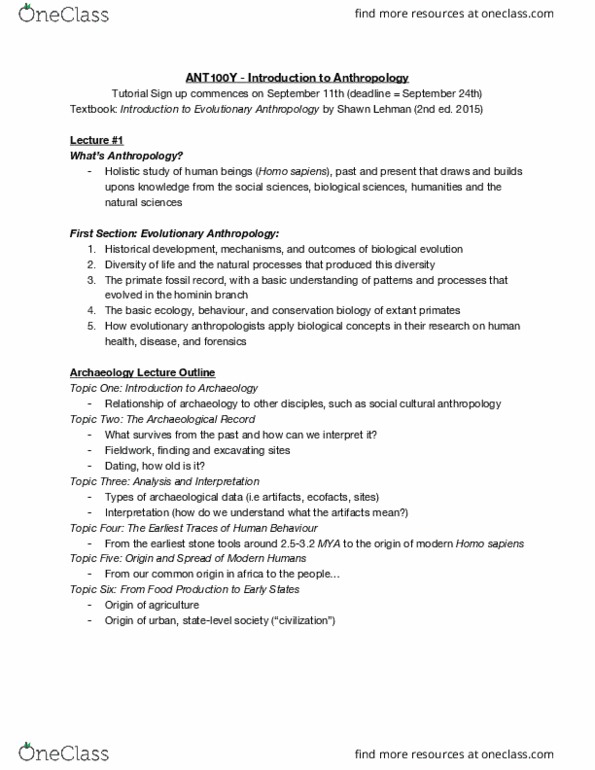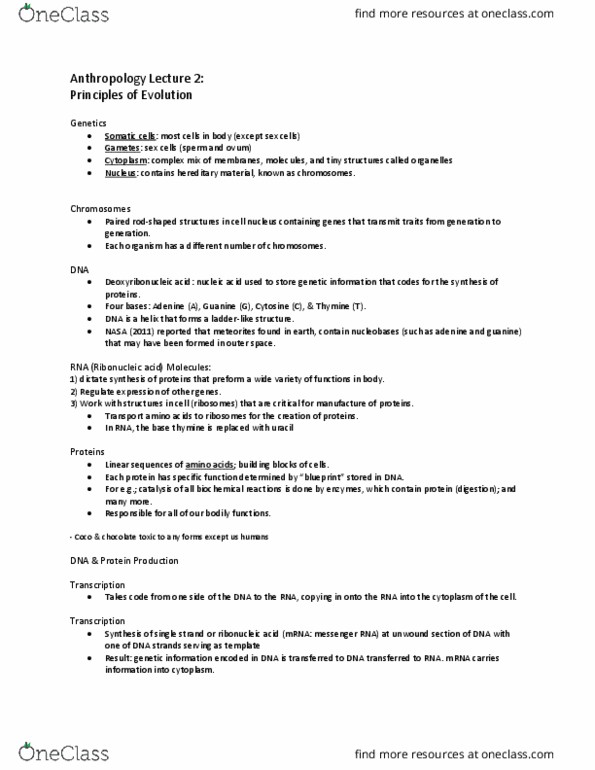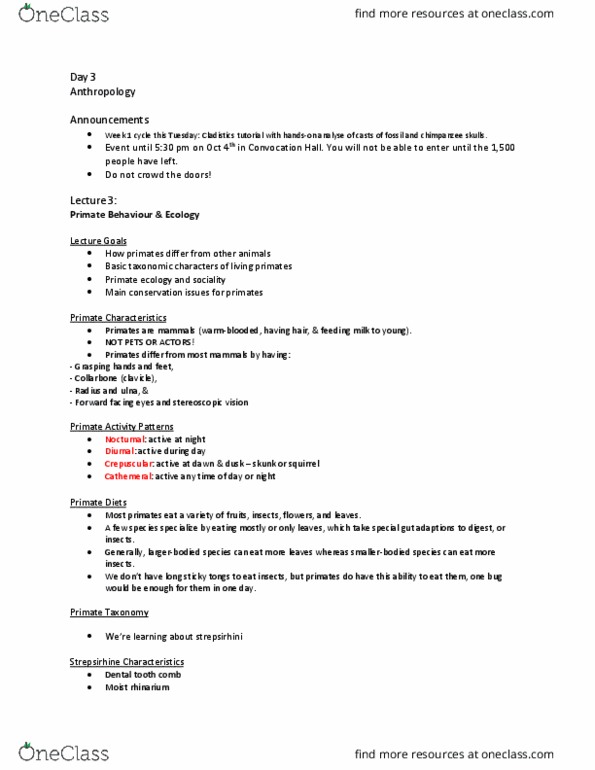ANT100Y1 Lecture 2: Anthropology day 2
ANT100Y1 verified notes
2/13View all
Document Summary
Somatic cells: most cells in body (except sex cells: gametes: sex cells (sperm and ovum, nucleus: contains hereditary material, known as chromosomes. Cytoplasm: complex mix of membranes, molecules, and tiny structures called organelles. Paired rod-shaped structures in cell nucleus containing genes that transmit traits from generation to generation. Each organism has a different number of chromosomes. Dna: deoxyribonucleic acid: nucleic acid used to store genetic information that codes for the synthesis of proteins. Rna (ribonucleic acid) molecules: dictate synthesis of proteins that preform a wide variety of functions in body, regulate expression of other genes, work with structures in cell (ribosomes) that are critical for manufacture of proteins. Transport amino acids to ribosomes for the creation of proteins. In rna, the base thymine is replaced with uracil. Linear sequences of amino acids; building blocks of cells. Ea(cid:272)h protei(cid:374) has spe(cid:272)ifi(cid:272) fu(cid:374)(cid:272)tio(cid:374) deter(cid:373)i(cid:374)ed (cid:271)(cid:455) (cid:862)(cid:271)luepri(cid:374)t(cid:863) stored in dna.




